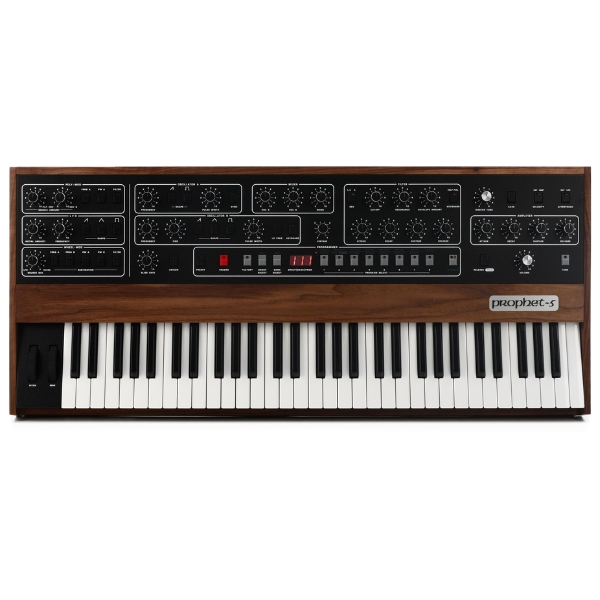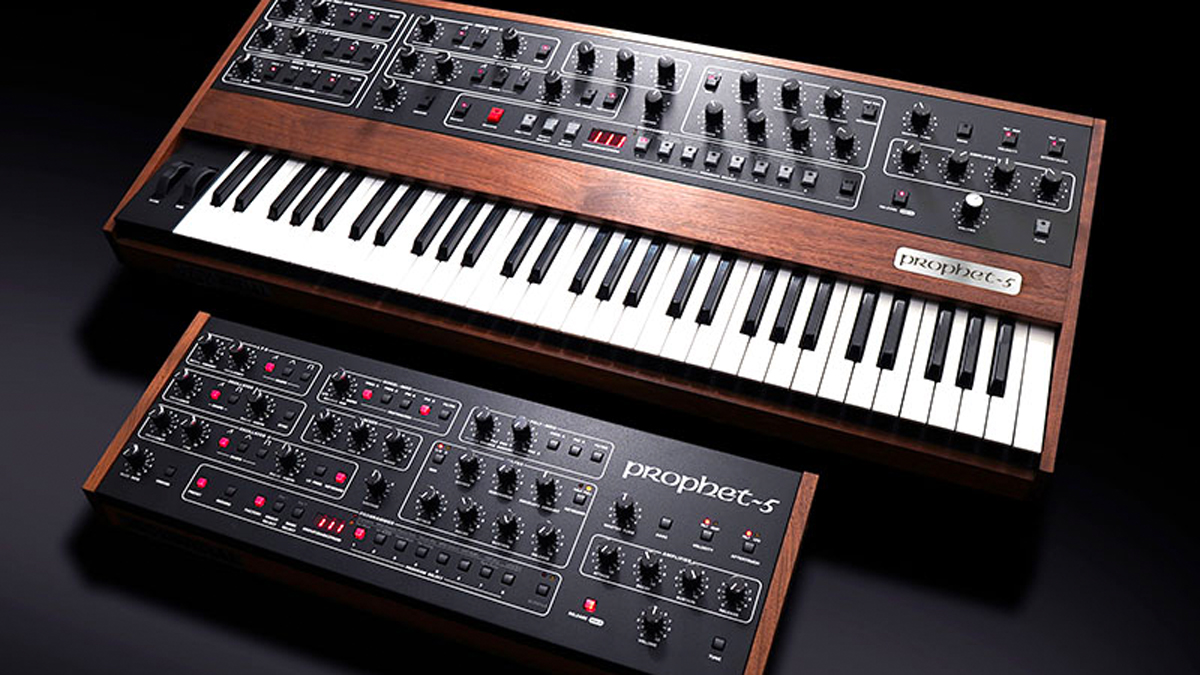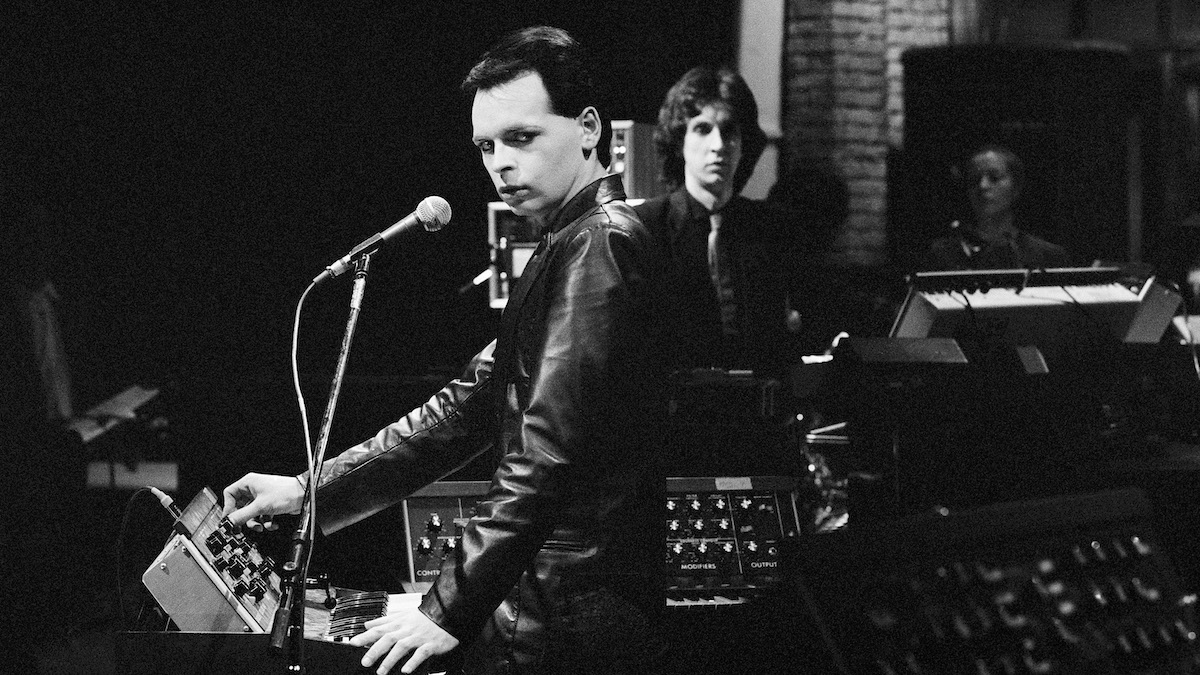"It sounded completely out of place in the chart it was in, and the year it was released": 5 Prophet-5-powered tracks by Radiohead, Gary Numan, Japan and more
We're in Prophet-5 mode, as we celebrate five decades of the first 'proper' polysynth with five – ok six – glorious tracks

The Sequential Prophet-5 was the first great polysynth. We're celebrating its release – for no other reason than it was, and still is, a fantastic synthesiser – by looking back over its five-decade lifetime and predicting (or indeed prophesying) which five tracks it will be remembered for. That's quite a task…
Released back in 1978, the Prophet-5 was the first synth to boast both polyphony and patch saving. Others had managed the former feature – being able to play more than one note at a time – before, but the Prophet wrapped it all up in a portable package with 40 presets, and the ability to create more. It was a major release and a big success.
There were three revisions of the synth over the following six years before it went out of production in 1984. However, some big names in music bought into the prophecy within that time period, with Peter Gabriel, Japan's David Sylvian and Richard Barbieri, Jean-Michel Jarre, Soft Cell and many more being big fans.

With such a great reputation, Sequential's Dave Smith brought the synth back in 2020 for a fourth revision, which we loved. It features the filter and other options that marked the differences between the three pervious versions, but adds modern sensibilities like USB.
This feature is all about the music, as we pick our top five Prophet-5 tracks (actually, as it turns out)
You can also buy a Prophet-10 that doubles the polyphony to 10 notes – there was an original P-10 released back in the '70s which was effectively a dual keyboard Prophet-5, but the modern one is just a single keyboard version.
With approaching 50 years of Prophet-5 synth use, we thought it high time to celebrate the synth and some of the songs it helped produce. In this feature, we looked back at the very first review of the synth and found some surprising predictions and lovely descriptions.
But the following feature is all about the music, as we pick our top five Prophet-5 tracks (actually, as it turns out, six, but that didn't work as the title so think of the last one as a bonus). The range of tones the Prophet-5 produces is staggering, as this varied range of songs proves. And while you might disagree with our choices, do feel feel free to add your favourites in the comments on Facebook.
Want all the hottest music and gear news, reviews, deals, features and more, direct to your inbox? Sign up here.
Here goes then: five for the Prophet-5…
Japan – Ghosts
Japan had been knocking on the door of fame for a long time by 1981, and had nearly opened it with tracks like Gentlemen Take Polaroids and Quiet Life. However, it would ironically be their final album as 'Japan' that would see them find their voice and record sales.
The classic performance could well have been be an advert for Sequential…
The album was a masterpiece, with keyboard player Richard Barbieri programming both an Oberheim and Prophet synths into new-form sounds that would give Tin Drum and the band a sound that they had been searching for since 1977.
Tracks like Visions of China and Cantonese Boy shine a light on a more obvious oriental theme, but Ghosts is the record's undoubted eerie highlight. It sounded completely out of place in the chart it ended up in, and the year it was released, so much so that even the Top of the Pops presenter above calls it a 'brave new record'.
The rest of the classic performance could well have been be an advert for Sequential, with both Richard Barbieri and, interestingly, the late great bassist Mick Karn on Prophets backing the enigmatic David Sylvian on what is probably the greatest P-5 song of them all.
And just to prove a point, here's a live performance of Ghosts on The Old Grey Whistle Test which opens bang on the Prophet.
Hall & Oates – I Can't Go For That (No Can Do)
Well, we did promise you that the Prophet-5 had some varied uses in its time, so what could be more different than Japan's Ghosts, we asked ourselves, and Hall & Oates' I Can't Go For That (No Can Do) was the first track to spring to mind.
Hall is stepping through the presets on the Prophet-5, but we're not entirely convinced it was used for so much…
While the duo might well be having something of a legal spat at the moment, back in 1981 they were peak Daryl Hall & John Oates, and the smooth, sweet and laid back tones of I Can't Go For That (No Can Do) were perfect fodder for pop charts of the time that could feature, well anything really.
The video above claims that the Prophet-5 was used on the eerie opening pad, the shimmering bell-like lead and more, and while we see Hall stepping through the presets on the Prophet-5, we're not entirely convinced it was used for all of those sounds.
That aside, it's another classic video that does seem like another Sequential advert on occasion – Dave Smith must have been laughing all the way to the bank back in '81 such were the many P-5 pop appearances in videos like this.
For the Prophet-5's more probable use in the track, there's a great clip here courtesy of Reverb, where presenter William Kurk goes through all the parts on I Can't Go For That, demonstrating the Prophet's use on the organ style stabs.
Radiohead – Everything In Its Right Place
We know Everything In Its Right Place from fourth Radiohead album Kid A uses a Prophet-5 because Wiki says it does. We also know it because we have a P-5, and it's pretty much the first electric piano preset that's being used.
The track ended up being the key to the album, unlocking writer's block and helping to give the record a musical direction
To be clear: we don't have any problems with preset use, particularly electric piano sounds, and the one on the P-5 is one of the best: deep, resonant and beautiful, and a sound you find hard to move away from and not play.
The Prophet in question was apparently producer Nigel Godrich's and the track – so in our books, the synth as well – ended up being the key to the album, unlocking writer's block and helping to give the record a musical direction.
Everything In Its Right Place is also cited as one of the best Radiohead tracks of the time, with Kid A itself regarded as one of the band's most innovative (although as music snobs, we cite its Warp Records influences as being the more ground-breaking).
A final little gear fact is that the band often used a Korg Kaoss Pad to recreate the vocal effects live which this clip of the track (eventually kind of) proves. Thanks again Wiki.
Phil Collins – In the Air Tonight
We go into detail on the making of In the Air Tonight in this feature, and indeed how it helped give rise to the gated drum sound used so much in the 1980s. And yes, you could argue that the song is most memorable because of 'that' drum fill two thirds of the way through, rather than its synth sound.
We'd argue the opposite: that the big impact is so big because of the proceeding atmosphere, and that comes by way of the Prophet-5
But we'd argue the opposite: that the big impact is so big because of the proceeding atmosphere, and that comes by way of the Prophet-5. Good argument, eh?
The synth is responsible for one of the few sounds at the start of the track along with the Roland CR-78 drums, simple processed guitar and, of course, Phil's vocal.
While not exactly the kind of single in the You Can't Hurry Love vein, In The Air Tonight was a huge hit around the world, again demonstrating 1981 as the 'anything goes' year of pop charts.
And while we can't find any pics of Phil playing the Prophet, here's the lovely William Kurk again at Reverb demo'ing how the synth was used on the track. Take it away William…
Gary Numan – The Aircrash Burea
Numan's Prophet-5 use came during the recording of Telekon in 1980, and the album has a smattering of tracks featuring at least one instance of the synth. We could quite easily have chosen This Wreckage or I Dream of Wires, but The Aircrash Bureau gets our vote simply because of the stunning synth solos that hit at around 2 minutes and 3 minutes 40 seconds, the latter also featuring some lovely piano.
Amusingly, Simple Minds get the credit for the handclaps, and they are indeed great handclaps…
OK, we can't say for definite which part is the P-5 as the song also employs some other classic synths, notably a Roland Jupiter-4, and Moog Polymoog. But whatever, Numan's skill has always been blending big pads and strings for massive impact and with an understated and atmospheric intro, the impact here is massive when those vintage synths arrive.
Denis Haines and Numan are both listed as playing the Prophet-5 and, amusingly, Simple Minds get the credit for the handclaps at the end. And they are indeed great handclaps…
Sadly, it looks like Gary didn't take the Prophet on tour, preferring to surround himself with Moogs, so here'a cool pic from the time of him doing just that.

Bonus track: New Musik – World of Water
OK, we couldn't keep it at just five tracks, such was the impact of the Prophet, so here's a bonus sixth. New Musik were an oddity back in the early 80s, a band that produced some perfect synth pop but certainly didn't attempt the futuristic look, on the one hand looking like a bunch of TV repair men, on the other, teachers heading off to the pub for a lunchtime pint.
The scratchy video above shows the band performing it on a beach with plenty of close ups of the Prophet-5, the cameraman possibly being Dave Smith
Many of their songs were sublime, though. Living by Numbers, On Islands and Sanctuary are the best tracks from the debut and best album, From A to B, as is World of Water. The scratchy video above shows the band performing it on a beach – of course – with plenty of close ups of the Prophet-5, the cameraman possibly being Dave Smith.
The track scraped into the UK top 40, as did two other singles, but the band spit after two further unsuccessful albums. Lead singer Tony Mansfield did find some success as a producer, though, working on a-ha's debut Hunting High and Low, and co-writing and producing Captain Sensible's Glad it's All Over.
Sadly, despite our attempts to interview him about his production talents, he has all but disappeared from music. Here's a picture of him looking happy with a-ha anyway.

- Read more: How to program a Prophet-5-style synth


Andy has been writing about music production and technology for 30 years having started out on Music Technology magazine back in 1992. He has edited the magazines Future Music, Keyboard Review, MusicTech and Computer Music, which he helped launch back in 1998. He owns way too many synthesizers.



![RADIOHEAD - Everything In Its Right Place [kaoss] - YouTube](https://img.youtube.com/vi/FeL_iCdJJC8/maxresdefault.jpg)


